*this post contains affiliate links
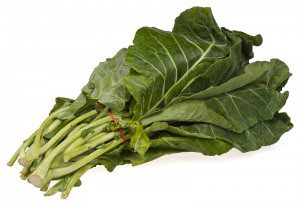 Few vegetables are more packed with vitamin-y goodness than leafy greens, especially the closely related and hearty Collard Greens and Kale.
Few vegetables are more packed with vitamin-y goodness than leafy greens, especially the closely related and hearty Collard Greens and Kale.
Varieties of naturally bitter Kale and sweeter, earthier Collards thrive year round. They also flourish right after the first frost. This traditionally provided much needed freshly harvested nutrients to families during the “Hungry Gap,” the coldest time of the year when no other vegetables were available.
Green Storage
Since modern societies exist mostly without seasonal food restrictions, the value of these delicious, nutrient dense vegetables has largely been forgotten. Packed with folates, vitamins A, C, & K, and many of the important B vitamins (B-3, B-5, B-6 and riboflavin), minerals such as iron, calcium, copper, manganese, selenium and zinc and much more, they deliver on their classification as “superfoods” like few others can.
Did You Know?
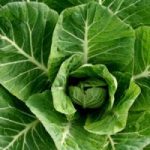 Collards and Kale are two of many cultivars stemming from the extremely diverse cabbage species Brassica oleracea.
Collards and Kale are two of many cultivars stemming from the extremely diverse cabbage species Brassica oleracea.
Other cultivars include broccoli, cauliflower, kohlrabi and brussels sprouts.
Unlike cabbage which form a tightly knit head of leaves, collards grow a rosette of large free-standing leaf stalks surrounding a main stem. Kale comes in a variety of colors and shapes, but curly green kale is commonly served.
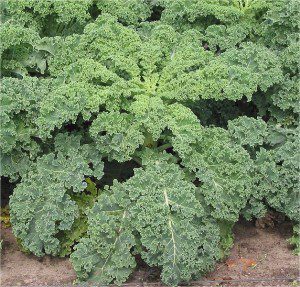
Kale comes in a variety of colors and shapes, but curly green kale is commonly served.
Collards are “colewort” aka “wild cabbage” and likely originated in Asia and were carried to Turkey over 2,000 years ago. Easy to cultivate in home gardens, Julius Caesar is said to have eaten collards after meals to aid digestion. They migrated across the Atlantic sometime during the 17th century and became staples in both the Southern part of the United States as well as Brazil. Eastern Africa, Zimbabwe and Kashmir also boast traditional collard dishes.
Americans Love Collard Greens
Collards, kale and other greens became staples of slave diets as plantation owners considered the plants to be weeds, encouraging them to eat as much as they liked. Often flavored with salted meat and vinegar, they have become a staple fixture in soul food cuisine.
Their popularity has soared in recent years as vegetarian and vegan trends have embraced all things green and continue to be popular in the South where a New Year’s Day pot of collards and black-eyed peas is supposed to ensure increased wealth in the New Year.
However, cooked properly and with the right ingredients, even the anti-veggie crowd can be convinced to snarf down some greens. So nab some collards from your local grocery store or farmer’s market and try this recipe that substitutes milder Kombucha vinegar for a tasty side dish.
COLLARD GREENS COOKED IN KOMBUCHA
Collards are a substantial green that provide a good amount of fiber, which means they require a bit more cooking time. Overcooking reduces the nutrient content, so taste frequently to prevent soggy greens.
The acetic acid in the Kombucha will help break down the greens and make the nutrients more bioavailable.
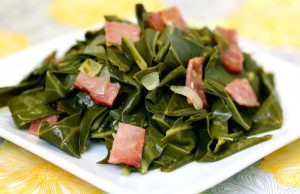 Serves 6-8
Serves 6-8
Ingredients
- 4 strips thick-cut bacon, cut in half (other options: fatback, pork belly, turkey neck or other fatty and salty meat)
*vegetarian option* – 2 tbsp. vegetable oil (THRIVE, AMZ) - 1 medium yellow onion, chopped
- 3-4 cloves of garlic, minced
- 1 Tbsp brown sugar
- 1/2 tsp salt (kosher or sea salt) (THRIVE, AMZ)
- 1/2 tsp fresh ground black pepper (THRIVE, AMZ)
- several dashes of hot sauce (THRIVE, AMZ)
- 1/4 cup unflavored Kombucha or Kombucha Vinegar
- 2 lbs. collard greens, stems removed and sliced into 3 inch strips
- 1 cup water or broth (chicken or vegetable)
Instructions
- Heat a large skillet on medium heat. Cook bacon, stirring occasionally, until the edges are slightly brown. Mix in onion and cook until they become translucent and start to brown. *If making this vegetarian, add oil to heated pan to brown the onion.
- Add garlic, sugar, salt, pepper, and hot sauce. Cook for about a minute, just until the garlic becomes aromatic. Next add Kombucha or Kombucha Vinegar. Bring up to a simmer and then cook until liquid reduces by half, stirring occasionally to keep bits from sticking to the pan.
- Add collards and broth (or water) to pan and return to a simmer. Turn heat down to medium-low. Stirring occasionally, cook collards until they are tender and have lost their brightness – about 20 minutes.
- Season to taste with more Kombucha and hot sauce. Serve with the juices (pot-liquor!) from the pan.
If you want to still get a bit of that bacon-y flavor without the bacon,
try adding a Tbsp of Bragg’s Liquid Aminos and
1-2 tsp of smoked paprika or 1 tsp liquid smoke (AMZ).
Are Collard Greens a new experience,
or an old favorite dish of your family?
How do you like to eat them?
Share in the comments below!
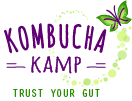
Frank Consolo
May 4, 2019 at 8:10 amHi Hannah (Kombucha Mamma),
Thank you for the yummy, yummy recipe !
Dhijara
July 15, 2013 at 7:23 pmRaw, Vegan Kale Chips! Crispy crunchy and so easy to make. Dehydrate them at 108 degrees for however long it takes them to crisp!
Delicious!!!
Your recipe sounds yummy too! I will try making it with Veggie bacon.
Thank you!
Len Porzio
April 7, 2012 at 3:48 pmYou are a force of nature girl! Great site.
Happy Easter,
~Len
hannah
April 16, 2012 at 3:18 pmThanks Len! Happy Easter to you!
Echo
March 1, 2012 at 1:26 pmHi, Hannah! A method I learned long ago for cleaning vegetables (and fruit) is: fill the sink with enough room temperature water to cover what’s being cleaned. Then, add lemon juice (equivalent to 1/2 lemon – I just pour from the bottle) and appx. 8T salt, and mix. Add the vegs/fruit and let sit for appx. 15 minutes. Then rinse. It gets it squeaky clean naturally. When cleaning corn husks for tamales, soak longer; the dirt just falls off.
Shane Koch via Facebook
March 1, 2012 at 12:38 pmI enjoy collard green and kale raw, but would like to try your recipe.
Beyond Kombucha via Facebook
March 1, 2012 at 8:14 amWe once had a chef ask us if a bacon flavored Kombucha was possible. I think you found a way! 🙂